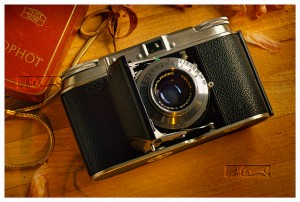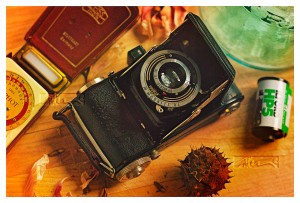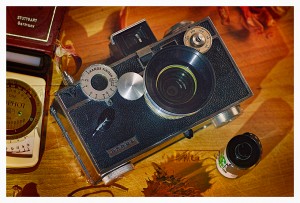A small sampling of some old favorites
Over the past few months, I started to shoot pictures of some of my old cameras. The images in the gallery are a few of several hundred different cameras in my personal collection. My goal is to create images that represent a good cross section rather than photographing every camera I own. I have many duplicates and cameras that are similar. In all likelihood, I’ll probably only shoot my favorites. Even though I have a lot of favorites.
Note: The images shown above have been created from a series of focus points using the digital technique of focus stacking. It is a way for me to control the sharpness of the entire image.
Generally, my cameras are not that pristine and in most cases, they were never considered very expensive. Although I probably paid more than they originally sold for when they were new, most were very reasonable finds at garage sales, purchased on eBay or given to me by friends. While there may be some hope that they will be worth something in the future, for now at least, they are simply things I admire. Almost all of them are fully functional. Even those that are 60 or 80 years old make a beautiful clicking sound when you fire the shutter.
Pretty much everything in my collection shows some sign of having been used. They all have small scratches and wear, as well as a bit of dust and a few fingerprints here and there. I’ve probably added most of them myself over the years. I love the notion that others whom I do not know have shot pictures with them. Like an old house, there is a mystery or two locked in each one of them. I can only guess at the places they’ve been, the things they have seen and people that used them.
Although many of them do end up there, I don’t buy my cameras to sit on a shelf. Rather, I keep most of them in boxes and from time to time, I like to load them with film and use them to shoot my own pictures. To use one feels a little like going backwards into time. It allows me experience a bit of history. The experiences of shooting and images they make are all different. To me, they are nostalgic and historic treasures. They are my toys.
I love old cameras in part because they are amazing examples of 20th century mechanical technology. They function almost entirely using the physics of levers, springs, and gears. Amazingly, they were designed without the aid of computers. Back then, there was no such thing as computer-aided design or computer generated optics.
Pretty much everything needed to build them was designed on a drawing board, built from raw materials and assembled by hand. They were produced with brass and steel and sometimes aluminum or a wonderful pre-plastic material called Bakelite. They were adorned with leather, usually painted with black enamel while some had chrome or were painted with color. They had clockwork shutters and amazing optics. They were machined or stamped and fastened with screws. Some had collapsible lenses while others had bellows, which allowed them to be folded small enough to fit into a pocket. They all wore their proud logos as badges of their quality and craftsmanship.
Most of the cameras I love were built long before electronic flash, automation, electronic shutters or even light meters. Nothing like Photoshop or Lightroom or HDR existed. Most were simply boxes with a lens and a very simple shutter. To take a picture, you set the aperture, the shutter speed and the focus. Click! And to see the picture, you had to wait until the film was processed and the images were printed.
By today’s standards, most old cameras were bulky and perhaps a bit awkward. Steel and brass are not light metals. There were cameras for every lifestyle, every age and every purpose. They were in every household at every level and in every class and race. They recorded all that was important to record. Like the cell phones of today, they were the time machines of the period. Like the digital devices we use today, they recorded life.
Recent article I did for Tamron about Focus Stacking February2013 Enewsletter.
One of the things I appreciate most about the cameras of the past is their basic simplicity. In those days, you had a lens to focus, an aperture ring, a shutter speed to choose and nothing else! There was no electronic viewfinder or touch screen monitor. They had no wifi, no Instagram, rechargers, touch screens or tiny plastic buttons. Life was simple, and so were the cameras. All you needed was a roll of film and a subject to shoot. You shared what you captured in the form of black and white prints. Color didn’t really happen until the mid 1950’s. You shared them with your closest friends and your family.
Most of my older cameras were made in West Germany just before, during and shortly after WWII. I have a few produced in East Germany and a couple from Russia. Most of them were produced in Dresden, and Jena, some from Munich and many from Stuttgart, where I was born. Viogtlander, Balda, Leica, ZeissIkon and Agfa are among the cameras I mostly collect. They have interesting names such as Bessa, Nettar, Vito and Ikonta. Their optics also had great names. Skopar, Tessar, Ektar, Solinar and others were some of the best ever produced. Most of the Japanese cameras I own were produced much later. I have a few from the 1960’s and 1970’s. Single Lens Reflex cameras made by Pentax, Canon and Nikon were a part of my work equipment in the 80’s and 90’s. I also have rangefinders and twin lens cameras made by Yashica and Ricoh.
Many of the cameras I have in my collection were made in the good old USA. Argus, Ansco, Kodak and Bolsey created some wonderful classics and some of my overall favorites. I have a couple of stereo cameras that were made in Milwaukee, a few cameras manufactured in Chicago, and some that were even built in New York City. Argus cameras, which popularized the 35mm film cassette, were built in Ann Arbor, Michigan. Ansco stands for Anthony and Scovill who produced cameras in Binghamton, New York. At one time, they were almost as big as Kodak. Most of my Kodak models were produced in Rochester, New York. Believe it or not, there was a time not that long ago when Rochester was considered the photo capital of the world. America produced many excellent cameras.
There have been some amazing cameras built by many different manufactures in many different countries throughout the world. I wish I could afford them all. They had character, they were stylish, and they were magical instruments for recording peoples lives.
I’m not sure how much value any of the newer cameras will ever have as they age. Nostalgia perhaps, but somehow not in the same ways I feel about my old cameras.
Cameras, like most things produced today, are more than likely made in China. They are mostly the same as the rest of the stuff you find these days. They are less mechanical and mostly electronic. And although more ubiquitous than any other point in photographic history, they seem to me to be less appreciated. We seem to take them for granted. The cosmetics change frequently, they get a few new bells and whistles, the colors change and it seems that in most cases, they somehow have better resolution or some other attribute than the ones made just a few months ago. But unlike the cameras above, you need a computer and the software or an app to make them count for much. They are sold in places that sell everything else. You don’t need a camera store now. Instead, you buy them online or at a mega store. To most people, they have become just another commodity.
Somehow, for me at least, the world that photography has become seems a little bit smaller and far less magical. But then, I grew up in a very different time and in what sometimes feels like a much different place.
While I really like what can be done with digital technology, I happen to love the mechanical cameras from a previous point in time. To me, they are all wonderfully magical boxes that were used to capture the light, the heart and the soul of life.
NOTICE of Copyright: THIS POSTING AS WELL AS ALL PHOTOGRAPHS, GALLERY IMAGES, AND ILLUSTRATIONS ARE COPYRIGHT © JOHN NEEL AND ARE NOT TO BE USED FOR ANY PURPOSE WITHOUT WRITTEN CONSENT FROM THE WRITER, THE PHOTOGRAPHER AND/OR lensgarden.com. THE IDEAS EXPRESSED ARE THE PROPERTY OF THE PHOTOGRAPHER AND THE AUTHOR.





